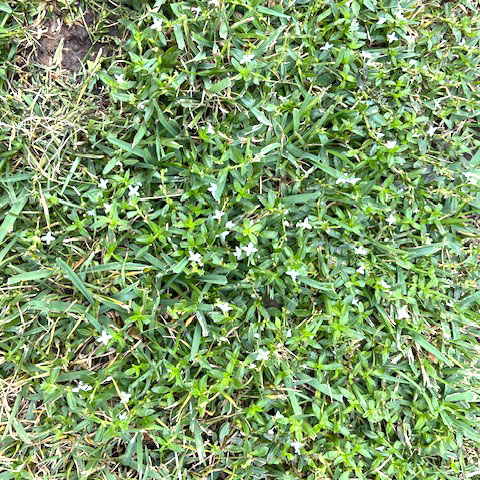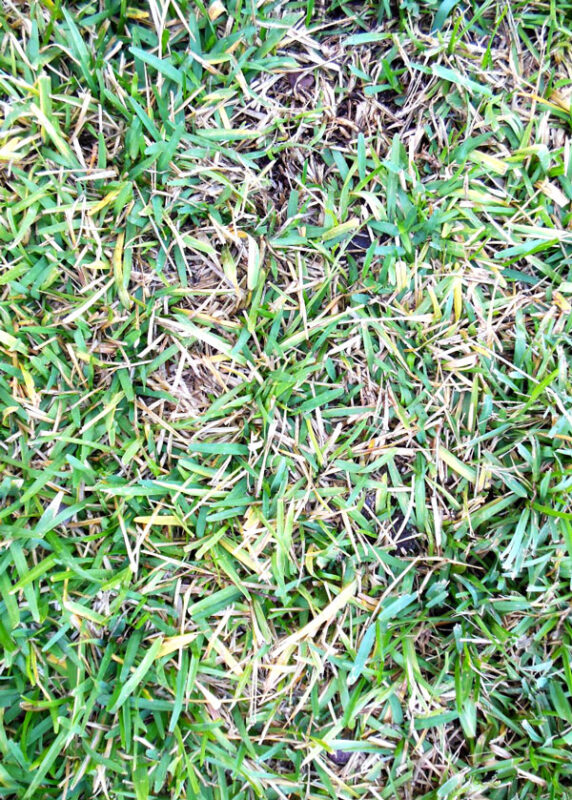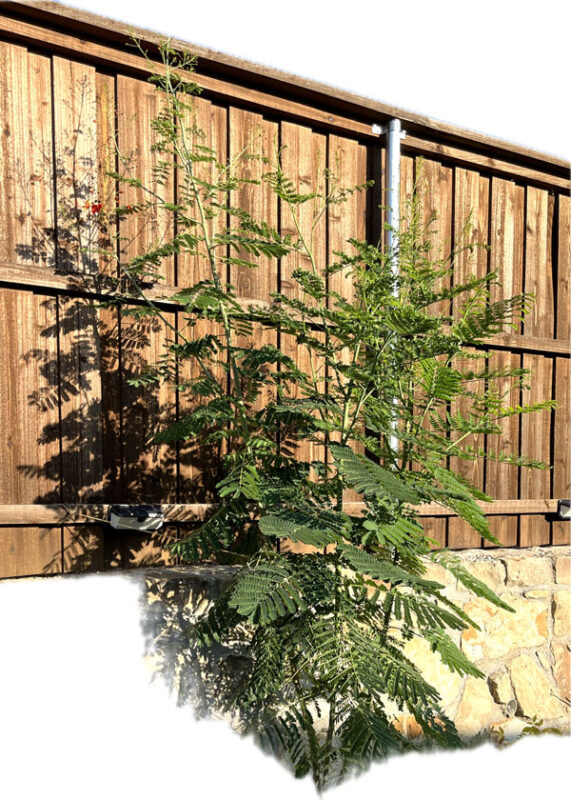Q&A – Ask Neil: October 16, 2025
(Please read these instructions carefully.)
Before you post your question, please look at recent issues to see if someone else has already asked it. You might find your answer there.
How to submit your question…
(Note: You may need to allow a pop-up window to come up in order to get the link for sending your photo(s). If you have already submitted your question and didn’t see the pop-up window, please click here.)
• Click the link provided below to post your question. After you submit your question, a new window will pop up giving you the address to which you can e-mail a SHARP, HIGH-RESOLUTION PHOTO to accompany your question. Please DO NOT SEND THUMBNAIL PHOTOS in case I need to zoom in to see things.
• Click here to post your question.
• Please ONLY POST YOUR QUESTION ONE TIME. We can only accept a set number of questions each week, and when we get duplicates it costs other people their chances.
• One question per reader, please.
• Please use this only for posting questions – not for standard emails.
• Watch for your answer in the following week’s e-gardens.
• I choose those of greatest general interest. For example, plant IDs seldom make the cut.
• I must have your first name or initials.
• I must have your city or county. (Texas is a very large state.)
Important favor: I’ve been covered up so far this year with questions about live oaks losing chunks of bark. Rather than continuing to answer the same questions weekly, I’d ask that you look back to previous issues. You’ll find several replies that I’ve posted. Thanks!
QUESTION 1
WHAT WOULD CAUSE LAWN TO HAVE MULTIPLE SPOTS OF BROWN GRASS?
Question: About half of my front yard appears to have freckles since there are multiple spots about the size of pancakes that have turned brown. Thinking it might be a fungus I treated it with a fungicide. Did I do the right thing? Randy M., Dallas.
Answer: I really do want to help you, but knowing the type of grass is critical. A photo would have been so much better. It could have been anything from brown patch in St. Augustine or zoysia to drought or chinch bug damage to dog urine damage from a female dog (sorry, I had to report it). If the fungicide helps, I guess it was a fungus.
QUESTION 2
HOW TALL WILL BURFORD AND DWARF BURFORD HOLLIES GROW?
Question: I am in need of a Burford holly to be about 6 ft. tall, but all the nurseries I have visited only have dwarf Burford hollies. Why is that? Could the dwarf variety ever get that tall? Jack K., Brazos County.
Answer: Regular Burford holly is rarely seen in the nursery trade these days. Just because I like to have a nice variety of hollies in our rural landscape, I was looking for them several years ago. I finally found them, but only in 2-gal. containers. I did buy and plant them. I have many dwarf Burfords, some that I’ve been growing for 45 years. Those are now 7 ft. tall, so yes, they can get to 6 ft., but they aren’t fast. But regular Burfords grow to 15 ft., so name your poison. I don’t know what your exact need is, but if you just want something with that general look and texture, Willowleaf hollies are a deviation of Burford. They grow to 8 to 12 ft. tall with age, but they grow more quickly than dwarf Burfords and they have a more relaxed growth habit than regular Burfords. They could be pruned to 6 ft. They might be a nice compromise unless you’re trying to match regular Burfords. (That’s the most times I’ve written the name “Burford” in one paragraph in my life.)
QUESTION 3
HOW LONG DOES IT TAKE IRON SUPPLEMENTS TO TAKE EFFECT?
Question: I have 6 azaleas planted in a row. One in the center has turned a light green. I applied an iron supplement to it, but it’s still pale. How long does it take to see results? Faylene H., Ben Wheeler.
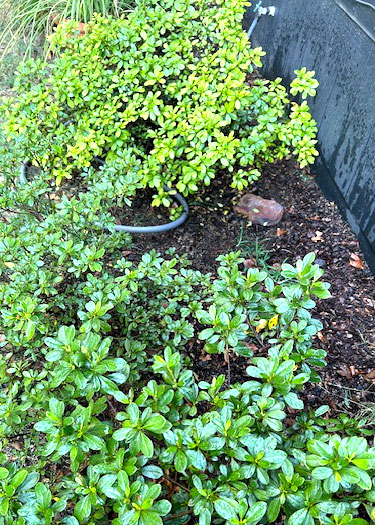
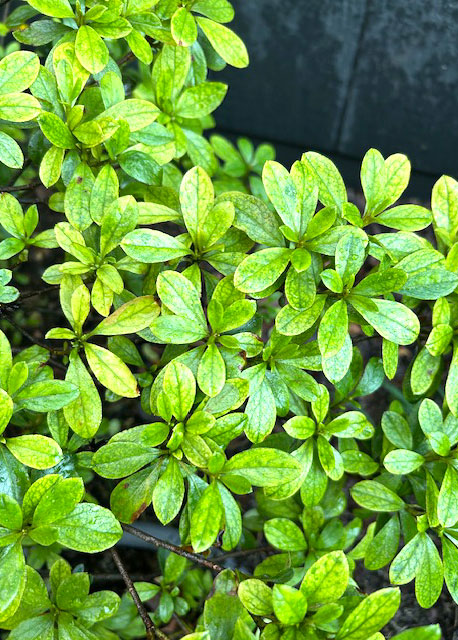
Images clickable for larger view.
Answer: If you apply iron to the soil, it will take longer. On the other hand, if you spray iron, you run the risk of staining surfaces nearby. Iron stains concrete, brick, wood, and other surfaces. This does look like iron deficiency (yellowed leaves with dark green veins), but the speed at which the green-up occurs may be affected by the time in the growing season. Plants are shutting up shop for the year. If it’s been more than a month I’d try foliar feeding with a careful spray application, then I’d resume treatments as growth resumes in the spring.
Is that plant growing in a container? Its potting soil may have broken down enough over time that it’s no longer able to keep iron in an available (soluble) form. Your native soil in Ben Wheeler should be able to sustain azaleas with just modest bed preparation. Add several inches of compost, then plant it into the bed this fall. That will help as much or more than putting iron on it time after time.
QUESTION 4
WHAT CAN I DO TO STOP THESE WEEDS IN MY ST. AUGUSTINE?
Question: I don’t know what kind of weeds I have in my lawn, and I certainly don’t know what to do to eliminate them. Bob B., Keller.
Image clickable for larger view.
Answer: You have Virginia buttonweed, and you also have my condolences. It’s one of the most difficult broadleafed weeds to bring under control. Most major southern universities have online information about dealing with it if you’ll Google “university control Virginia buttonweed.” Here are a couple that came up for me.
LSU ag center: Simple and practical homeowner information.
University of Georgia: Much more detailed, almost technical information for serious amateurs and professionals alike.
QUESTION 5
SHOULD EXTRA SHOOTS BE REMOVED FROM LARGE BRANCHES ON WATER OAK?
Question: We have a large, old water oak in our backyard. It has numerous shoots growing off the large branches. Should these be removed, and if so, when? Lynn C., Tomball.
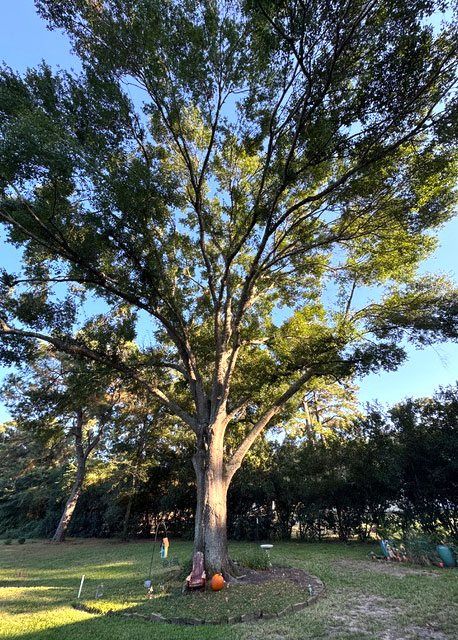
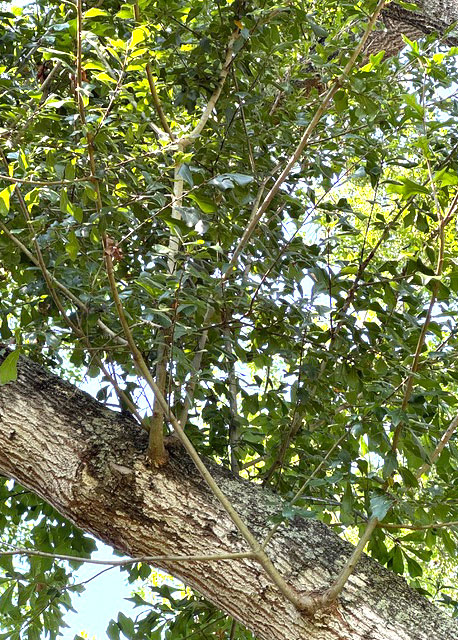
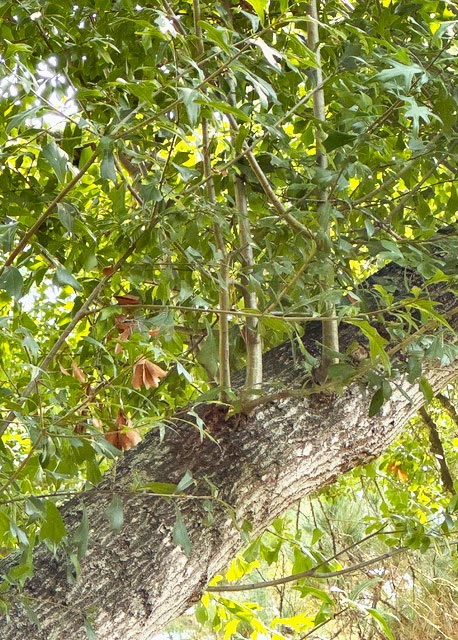
Images clickable for larger views.
Answer: When dormant buds on a trunk or branch erupt and start growing that usually tells us that there is something going on within that branch that is causing its decline. The old principle of “apical dominance” (where the tip of a branch sends a hormonal message down to these dormant buds not to grow) has been lost in the process. That caused me to look at your distant photo showing the overall trunk, and I noticed a dark streak heading up the side of the tree. I zoomed in until the low resolution turned the image into pixels. It looks like there’s a gaping wound running the length of the trunk. It’s been trying to heal, but in that time, it probably also has developed internal decay. My recommendation is that you get a certified arborist on site in the next 6 weeks to inspect this tree carefully. Heavy-duty pruning may be needed. It’s even possible the tree has been compromised enough that it could fall. If so, you’re better off having it taken out before it falls and hurts someone.
QUESTION 6
WHAT HAS HAPPENED TO MY ST. AUGUSTINE?
Question: My St. Augustine has gone from lush and green in the spring to a mixture of green and dead blades now. I find no chinch bugs and only an occasional grub worm – not the 5 per sq. ft. it takes to do damage. Is this TARR or brown patch? Or a virus? Alison T., Austin.
Answer: This does not appear to be TARR or brown patch, although if the affected areas are 18-in. circles it could be the latter. It just doesn’t look right for that fungus. St. Augustine Decline (SAD) virus kills primarily older lawns that still have “common” St. Augustine (not one of the newer hybrids). It causes the blades to be mottled. I don’t see that. Honestly, of the problems that bother St. Augustine, I see no matches. This looks more like turf that has gotten too dry one or more times this fall. There are a lot of lawns across Texas that look like this.
QUESTION 7
HOW MUCH SHOULD WE PRUNE OUR PRIDE OF BARBADOS BACK AFTER THIS GROWING SEASON?
Question: We bought a pride of Barbados tree early in the summer. It grew well, but it’s just starting to bloom. There are many buds now. When and by how much should we prune it back once we are through this growing season? Alvie S., Fort Worth.
Answer: Your bigger concern in the Metroplex will be if it will survive the winter. Take advantage of the fact that you have it against the fence and prepare to tack frost cloth over it when temperatures drop into the 20s. If you have dieback, you can trim that off during the winter or in very early spring. Your plant will let you know.

